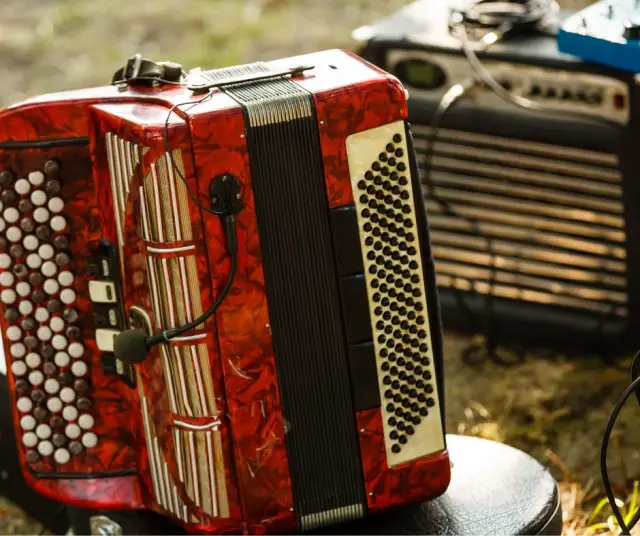Vallenato is one of the most representative musical genres in Colombia, with a rich history that reflects the cultural diversity of the country. Originally from the Caribbean region, specifically from the department of Cesar and the city of Valledupar, vallenato has transcended borders, becoming a symbol of Colombian national identity.
Origins and Roots of Vallenato
The term "vallenato" derives from "Valledupar", the city where this music has its cradle. However, its roots extend beyond this region, encompassing African, indigenous and European influences that merged over the centuries on Colombia's Caribbean coast.
African Influences: The arrival of African slaves to the Colombian Caribbean during the colonial era brought with it a rhythmic and percussive richness that was incorporated into local musical genres. The drums and other percussion instruments used in African ceremonies and festivities left a deep mark on the rhythm of vallenato.
Indigenous Influence: The indigenous communities of the Sierra Nevada de Santa Marta and other nearby areas also contributed to the evolution of vallenato, mainly through instruments such as the bagpipe and the guacharaca, which are essential in vallenato music.
European Influence: The Spanish colonizers introduced instruments such as the accordion, which became the pillar of vallenato. Furthermore, the lyrical and melodic structure of vallenato has clear influences from European ballads and romances.
Evolution of Vallenato
Over the years, vallenato has gone through several stages of development and popularization, always maintaining a deep connection with the stories and daily experiences of the people of the region.
Traditional Vallenato: The first vallenatos were sung oral narratives that told love stories, tragedies, legends and everyday anecdotes. These stories were accompanied by the accordion, the box (a small drum) and the guacharaca, creating a distinctive and captivating sound.
The Four Airs of Vallenato: Vallenato is characterized by its four fundamental airs or rhythms: the stroll, the merengue, the puya and the son. Each of these rhythms has its own tempo and playing style, which adds diversity to the genre.
The Minstrel Dynasty: During the first decades of the 20th century, iconic figures known as "minstrels" emerged, who traveled from town to town carrying their songs and narratives. Among them, Francisco the Man stands out, who according to legend defeated the devil in a musical duel, and Emiliano Zuleta, author of the famous "The cold drop."
The Internationalization of Vallenato
In the mid-20th century, vallenato began to gain recognition beyond the Caribbean region, thanks to the work of composers and performers who brought the music to large cities and international audiences.
Golden Era: During the 60s and 70s, vallenato lived a golden era with artists such as Rafael Escalona, who was a great composer and chronicler, and Alfredo Gutiérrez, known for his virtuosity on the accordion. His songs resonated throughout Colombia, consolidating vallenato as a national genre.
Carlos Vives and the New Wave: In the 90s, Carlos Vives revolutionized vallenato by fusing it with other genres such as rock and pop. His album "Clásicos de la Provincia" (1993) was a resounding success and opened the doors of vallenato to a global audience. Vives reinterpreted traditional songs, giving them a contemporary sound without losing the essence of the genre.
Vallenato in the 21st Century: Currently, vallenato continues to evolve and adapt to new trends. Artists such as Silvestre Dangond, Jorge Celedón and Jean Carlos Centeno have kept the tradition alive while experimenting with fusions and collaborations with other genres and international artists.
Cultural heritage of Humanity
On November 29, 2015, UNESCO declared traditional vallenato as Intangible Cultural Heritage of Humanity. This recognition highlighted the importance of vallenato not only as a musical expression, but as an integral part of Colombia's cultural and social identity.
Key Instruments of Vallenato
Accordion : Introduced by German immigrants at the end of the 19th century, the accordion is the heart of vallenato. Its versatility and ability to produce complex and rhythmic melodies make it the main instrument of the genre.
Caja Vallenata : A small drum that provides the base rhythm of vallenato. Its dry, percussive sound is essential for the rhythmic structure of the music.
Guacharaca: A percussion instrument made of cane or wood, played with a metal comb. It produces a raspy sound that adds texture to the vallenato rhythm.
Letters and Themes of Vallenato
The lyrics of vallenato are one of its most distinctive aspects. The songs usually address topics such as love, nature, rural life, politics and social relationships. Many vallenato songs are chronicles of daily life, telling stories of real people and specific events, which gives them a deeply personal and authentic character.
Songs of Love and Heartbreak: Vallenato is famous for its emotional ballads of love and heartbreak, which capture the complexities of human relationships.
Songs of Nature : Many songs pay tribute to the beauty of the Caribbean landscape, describing mountains, rivers, and rural life with a poetic sense.
Social Chronicles: Vallenato also serves as a means of commenting on politics and social conditions, often with a satirical or critical tone.
The Vallenata Legend Festival
One of the most important events for vallenato is the Vallenato Legend Festival, which has been held annually in Valledupar since 1968. This festival brings together the best vallenato performers and thousands of fans from all over the world. During the event, competitions for accordion players, composers and singers are held, keeping the tradition alive and promoting new generations of vallenato musicians.
